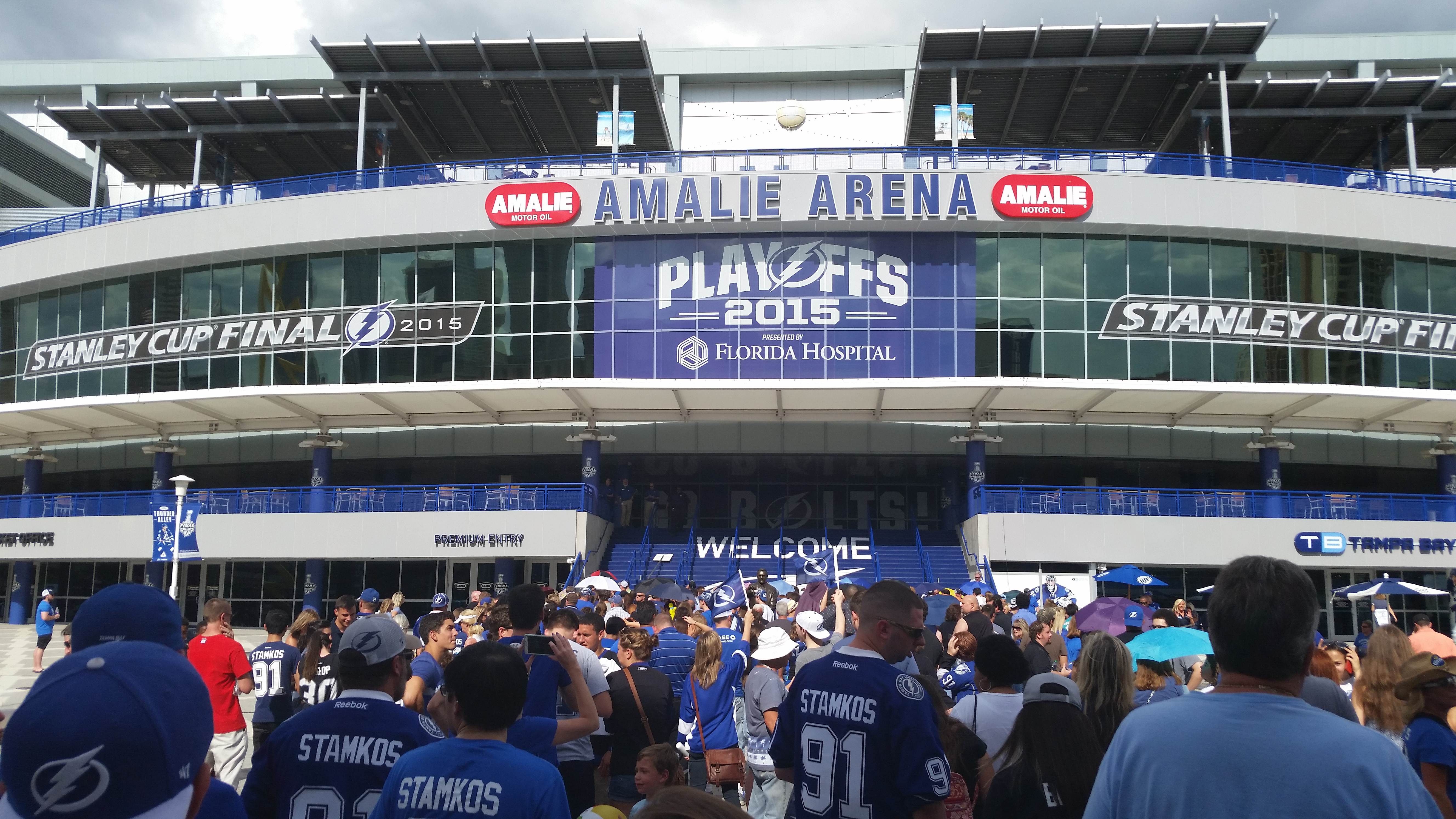
Hockey in Florida: Fighting Florida’s Humidity to Create Energy-Efficient Ice Rinks
From AHR Today 2020 Newsletter
Ice rinks are energy hogs. In Florida, another challenge demands attention: humidity.
Hot-and-humid Florida is home to various hockey teams throughout the state, including two National Hockey League franchises. From the Florida Everblades to the Orlando Solar Bears, Florida’s weather does not melt the state’s enthusiasm for hockey.
“Cold and dry are the best conditions for ice-making anywhere. Achieving that in Florida is the trick,” said David Wescott with All Star Arenas, who served as the ice master for ice hockey competition at the 2006 Torino Olympic Games and as the assistant chief of competition for ice hockey in the 2002 Salt Lake City Olympic Games.
Wescott said ice arenas’ humidity and refrigeration systems can handle the heat load. The moisture load is the challenge to creating good ice conditions. He said desiccant dehumidification is the best way to achieve ice’s ideal dew point of 35–40°F (2–4.4°C).
“Desiccant dehumidification is the only way to achieve the low dew points we are looking for. Low-E ceilings help with the radiant load on the ice but do not help with moisture,” said Wescott, a certified plant engineer.
Many people try to dehumidify using mechanical dehumidification in order to drop the air temperature to reach a lower dew point. Typically, that cold air will pass through a warm coil to help the rink feel more comfortable. But, he said, they are just dropping the room temperature.
Wescott said the problem with mechanical dehumidification is that the coil freezes if it gets below 32°F (0°C), so it has to go through a thaw cycle to get the ice off the coil. “The moisture is frozen on them.” A low dew point is mechanically impossible to achieve, he said.
Wescott said that desiccant dehumidifiers’ filter material is a silicone gel that physically captures the moisture while another part of the wheel is being dried off. This is how it puts out warmer air. Rinks typically have at least one dehumidifying system per ice sheet, and a lot of rinks have multiple ice sheets.
Ice rinks in Florida recycle dry desiccant air, which makes the room comfortable for occupants, said Wescott, who has been responsible for ice-making and ice quality at international ice hockey, figure skating and curling championships.
 Amalie Arena, the home of the Tampa Bay Lightning, houses one of Florida’s National Hockey League teams about 85 miles southwest of Orlando. Florida boasts various hockey teams in its hot and humid climate. A hockey ice expert said ice arenas’ humidity and refrigeration systems can handle the heat load. The moisture load is the challenge to create good ice conditions.
Amalie Arena, the home of the Tampa Bay Lightning, houses one of Florida’s National Hockey League teams about 85 miles southwest of Orlando. Florida boasts various hockey teams in its hot and humid climate. A hockey ice expert said ice arenas’ humidity and refrigeration systems can handle the heat load. The moisture load is the challenge to create good ice conditions.
Credit: Michel Curi
Energy-Efficient Arenas
Beyond the refrigeration and HVAC systems, the building determines the energy efficiency, not the equipment used, he said. The most energy-efficient facilities he works with use vapor barrier and insulation to help keep the load off of the ice plant.
“Ice rinks are energy hogs, and keeping the operating costs down is very important,” he said. “We have learned if the building is done well, the equipment doesn’t have to work hard, and that’s when energy is saved. Balancing the cost of the building to achieve energy efficiency is the important part.”
Strategies such as providing a tight building envelope, using closed-cell foam insulation and having a roof design that puts insulation on top of the steel deck and not below it are ways to provide energy-efficient technology. Wescott also suggested using tilt-up walls that have an insulation layer and foam panel-type walls and ceiling.
“But the roof connections to the walls are always very important. That’s where we can get air infiltration. And that’s another reason to utilize the air system is that we set the air system to bring in fresh air only as needed with sensors. So, otherwise, we try to recirculate as much as possible,” he said.
Wescott said the best rinks in Florida are built like cold storage facilities and refrigerators.
“Great ice is cold and dry,” he said.
He said a common mistake made by engineers and architects who are not familiar with ice rinks in Florida is anticipating the heat load and the humidity.
“We can sometimes deal with the heat with tonnage of refrigeration. But once the moisture is in there, now you’ve got bigger problems. Heat travels from warm to cold and all the heat gets onto that ice,” Wescott said.
After all, great ice is cold and dry.